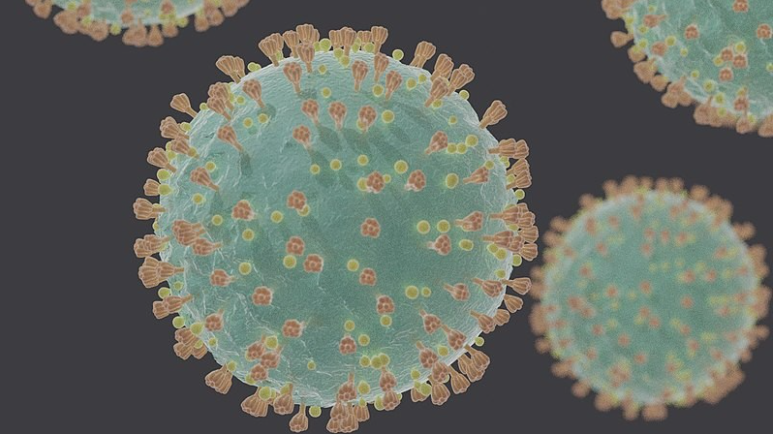
Study Shows COVID-19 Infection rates in March 80x Greater Than Reported
A new, peer reviewed study out of Penn State concludes there were over 80x the number of COVID-19 infections in the United States in March than what was reported. These findings are consistent with the outcome of a plethora of antibody studies done across the country that found anywhere from 10-80x the number of infections vs officially reported cases, though those studies were not as early as March. In March when the virus first began to really rear it's ugly head, there was limited testing with strict criteria. That combined with asymptomatic cases and lock downs not really in force until the end of the month, meant the virus had already spread far and wide.
We analyzed each state’s influenza-like illnesses (ILI) cases to estimate the number that could not be attributed to influenza and were in excess of seasonal baseline levels,” said Justin Silverman, assistant professor in Penn State’s College of Information Sciences and Technology and Department of Medicine. “When you subtract these out, you’re left with what we're calling excess ILI – cases that can't be explained by either influenza or the typical seasonal variation of respiratory pathogens.
These excess ILI cases correspond to more than 8.7 million new cases during the last three weeks of March, compared to the roughly 100,000 cases that were officially reported during the same time frame. In New York, for example, the conclusion is that at least 9% of the state’s entire population was infected by the end of March. After the state conducted antibody testing on 3,000 residents, they found a 13.9% infection rate, or 2.7 million New Yorkers.
Excess ILI appears to have peaked in mid-March as fewer patients with mild symptoms sought care and states implemented lock downs and social distancing guidelines which led to lower transmission rates. Nearly half the US states were under lock down orders by March 28.
Our results suggest that the overwhelming effects of COVID-19 may have less to do with the virus’ lethality and more to do with how quickly it was able to spread through communities initially,” Silverman explained. “A lower fatality rate coupled with a higher prevalence of disease and rapid growth of regional epidemics provides an alternative explanation to the large number of deaths and overcrowding of hospitals we have seen in certain areas of the world.
This study highlights two key points that have already been reported on but are now more definitive, and explain prior conclusions:
First, this is now clear proof that the infection fatality rate (IFR) of COVID-19 is far lower than official case fatality rate (CFR) suggests. We know this anyway, it has just been hard to know by how much. The current CFR worldwide is 5% (it's also 5% in the US). Between this study and all previous antibody studies already reported on, if the true number of cases is 10x official reports, that drops the IFR to 0.3%. If the number of cases is even higher than that, say 40x, the IFR drops to 0.1%. Estimated fatality rate of the flu (not including pneumonia) is 0.1%. The main difference between COVID-19 and the seasonal flu appears to be how fast it can spread, which is quite likely a product of how long one can be asymptomatic prior to showing any symptoms (if you do at all) combined with those symptoms often being very mild and similar to that of the common cold.


Second, it's confirmation of the reasons why lock downs all across the world appear to have zero correlation with virus prevalence, as per what was previously reported. As the study indicates, and the CDC confirms, once virus prevalence reaches about 1% of the population regionally, it simply needs to run its course and intervention methods will have very little impact. It also appears to validate the fact that mitigation strategies, whilst perhaps helping to ensure hospital capacity, will not likely impact the overall course of the virus. By this I mean if you offered no mitigation strategy at all (think New York in March), the cases and deaths would spike rapidly and then fall off just as rapidly. Whereas, where there are significant mitigation efforts, you won't see the same spike but the overall course will be more drawn out over time, as you are now seeing in states that are seeing a surge in cases for the first time.
What is also quite clear now more than ever (though it's always been quite clear), is that outside long term care facilities, the risk to the average person is incredibly low. Well over 50% of all reported deaths (over 80% in many western countries) are as a result of the virus spreading through long term care homes. Many of these homes are under funded, over crowded and under staffed. It was a recipe for disaster, and a disaster it has been. That said, it's also why you are seeing record numbers of new cases in the US recently, yet their death count continues to decline. This is because the virus has been in and out of LTC facilities, meaning that's not where new cases are any longer. As a result, very few people are dying. Here are some facts - From March 16-26 the US averaged 90 daily deaths from COVID-19. From April 16-26, that number ballooned to about 2500 daily. By May 26, that 10 day average had dropped to just over 1100. As of today, that 10 day average is just 626.
You hear a lot of people talk about how bad a state the US appears to be in currently, but I would argue the exact opposite. It appears the US now has it right. As cases rise, you get that much closer to herd immunity. If there were nearly 9M cases in the US by the end of March, how many cases must there be now, nearly 3 months later? The whole point of lock down measures was to ensure hospital capacity. The US, including NYC, never once had a hospital that did not have any capacity, even during the peak. Currently, with the surge in cases, they have as much capacity as they ever have. They are learning to live with the virus, understanding that life is not without risk and that people will get the virus, but as long as it is not in care homes, then people will and SHOULD get the virus to build up immunity without crippling the economy and the multitude if negative impacts that go along with that.
What we also need to remember, is that COVID-19 isn't a death sentence for even the most vulnerable population. I've heard many people casually say how devastating it would be if they got it because they have Asthma or COPD etc... They are terrified of dying if they get the disease (media sensationalism at its finest). Yet take Nova Scotia as an example, without understating the tragedy that occurred at Northwood long term care, even there 80% of those who got the virus, survived. There isn't a more vulnerable population on Earth, nor is there an environment that would allow for the transmission of a virus any faster and easier, yet the survival rate is still 80%, please don't forget that.
It's time to be rational and realistic moving forward. It's time to live again and not be in fear. It's time to stop demonizing those who are from Quebec, Ontario or Florida. The facts are what they are. If you are under 70 years old and contract the virus and bet you will live, you will be right over 99% of the time. If you are 85 and very sick and get the virus and bet you will live, you will still be right 80% of the time. I like those odds. Time to move on, with a plan to ensure the conditions in long term care facilities across the globe are improved exponentially.
